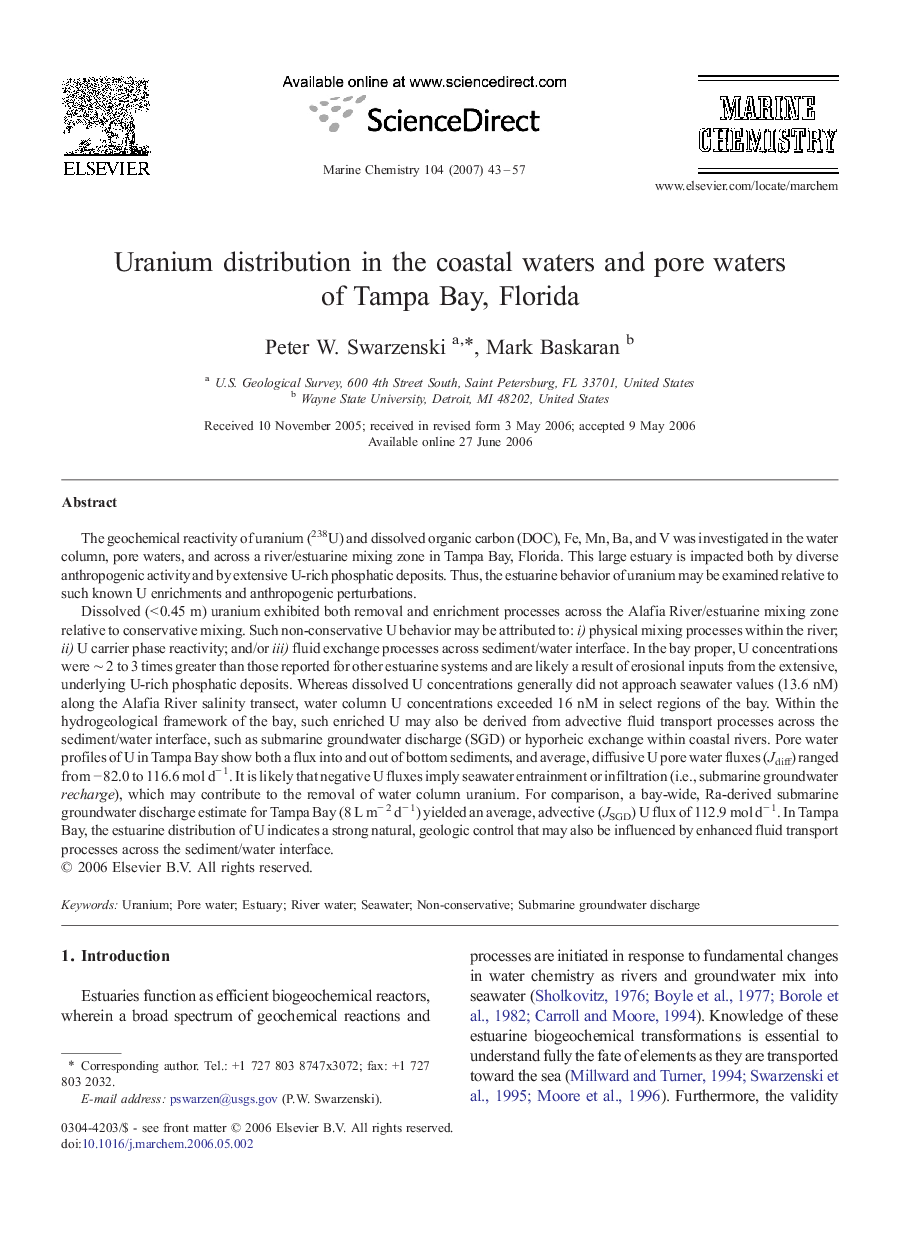| کد مقاله | کد نشریه | سال انتشار | مقاله انگلیسی | نسخه تمام متن |
|---|---|---|---|---|
| 1263335 | 1496731 | 2007 | 15 صفحه PDF | دانلود رایگان |

The geochemical reactivity of uranium (238U) and dissolved organic carbon (DOC), Fe, Mn, Ba, and V was investigated in the water column, pore waters, and across a river/estuarine mixing zone in Tampa Bay, Florida. This large estuary is impacted both by diverse anthropogenic activity and by extensive U-rich phosphatic deposits. Thus, the estuarine behavior of uranium may be examined relative to such known U enrichments and anthropogenic perturbations.Dissolved (< 0.45 m) uranium exhibited both removal and enrichment processes across the Alafia River/estuarine mixing zone relative to conservative mixing. Such non-conservative U behavior may be attributed to: i) physical mixing processes within the river; ii) U carrier phase reactivity; and/or iii) fluid exchange processes across sediment/water interface. In the bay proper, U concentrations were ∼ 2 to 3 times greater than those reported for other estuarine systems and are likely a result of erosional inputs from the extensive, underlying U-rich phosphatic deposits. Whereas dissolved U concentrations generally did not approach seawater values (13.6 nM) along the Alafia River salinity transect, water column U concentrations exceeded 16 nM in select regions of the bay. Within the hydrogeological framework of the bay, such enriched U may also be derived from advective fluid transport processes across the sediment/water interface, such as submarine groundwater discharge (SGD) or hyporheic exchange within coastal rivers. Pore water profiles of U in Tampa Bay show both a flux into and out of bottom sediments, and average, diffusive U pore water fluxes (Jdiff) ranged from − 82.0 to 116.6 mol d− 1. It is likely that negative U fluxes imply seawater entrainment or infiltration (i.e., submarine groundwater recharge), which may contribute to the removal of water column uranium. For comparison, a bay-wide, Ra-derived submarine groundwater discharge estimate for Tampa Bay (8 L m− 2 d− 1) yielded an average, advective (JSGD) U flux of 112.9 mol d− 1. In Tampa Bay, the estuarine distribution of U indicates a strong natural, geologic control that may also be influenced by enhanced fluid transport processes across the sediment/water interface.
Journal: Marine Chemistry - Volume 104, Issues 1–2, 13 February 2007, Pages 43–57